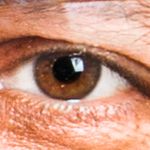 Adobe Community
Adobe Community
- Home
- Stock Contributors
- Discussions
- Re: Is there any way to get rid of the "artifacts"...
- Re: Is there any way to get rid of the "artifacts"...
Copy link to clipboard
Copied
Hello,
All of my photos have been taken on an iphone, and they look good to me, but it states there are "artifacts" in most of the photos I submitted. Is there a way to solve
this or edit the photos, changing the size/properties of the file, etc? Or is it because I need a professional camera. Please Advise.

 1 Correct answer
1 Correct answer
If you view this image at around 100 - 135% or so, you can see JPEG artifacts - the sky, the bushes on the hill and between the sky and the sea.


To avoid this you really need a camera that can take DNG/raw files rather than directly to JPEG.
Copy link to clipboard
Copied
If you view this image at around 100 - 135% or so, you can see JPEG artifacts - the sky, the bushes on the hill and between the sky and the sea.


To avoid this you really need a camera that can take DNG/raw files rather than directly to JPEG.
Copy link to clipboard
Copied
ricky336 wrote
If you view this image at around 100 - 135% or so, you can see JPEG artifacts - the sky, the bushes on the hill and between the sky and the sea.
Always look at your pictures at 100% or 200% to see the flaws like noise, chromatic aberration, sharpness etc. Use a fit in screen to appreciate the colour grading and the cropping.
Copy link to clipboard
Copied
Editing pictures is an art on it's own. And yes, there are programs like Photoshop and methods and tricks to eliminate the flaws in the pictures. However, cameras not outputting raw files process the picture internally according to algorithms that do automatically choices that have a direct influence on the picture quality.
Generally, a processing like that is ok for pictures you want publish in your personal photobook. But sites like Adobe stock want pictures as perfect as possible. So best is to be able to do the processing offline and non destructive. That's why pros and serious amateurs use raw pictures and software like Lightroom.
However, there are physical limits related to choices taken during the design phase of your camera that influence irreversibly the quality of the pictures you take. With phones those limits are normally the size of the sensor (it's small) and the design of the lenses (they are small and exposed to many ordeals. They are also fixed and not interchangeable. Also lightning limitations are also a decisive factor for picture quality. A good flash beats any phone led.
Phones may take wonderful pictures but the conditions must be ideal. If any factor, like light, subject distance etc is not ideal, the picture will fail the quality check.
Professional cameras have a full frame sensor that allows for much unfavorable light conditions, higher resolution and less noise. So it is easier to shoot quality pictures. They have also more reserves to enhance a pictures when the conditions are not that optimal. And they allow using different lenses for different picture types. Cameras in between full size and a phone have more or less issues but are generally better than phone cameras (except if they use the same sensors...).
Unfortunately advertising suggests that a phone can do pictures like a pro. They have made considerable improvements but still, there is nothing better than the correct camera with the correct lens for a given situation. And well, there is nothing more important than to know the light and the rules for composing pictures.
Copy link to clipboard
Copied
More than anything other, I think the problem lies in the washed out parts of the picture, where the camera software has flattened regions that shouldn't have been flattened:

I think the software took the decision to flatten out this noise.
